
Solar System Chart TCR7633 Teacher Created Resources
A solar system is made up of a star and all of the objects that orbit it—planets, moons, asteroids, comets and meteoroids. Most stars host their own planets, so there are likely tens of billions of other solar systems in the Milky Way galaxy alone. Solar systems can also have more than one star.
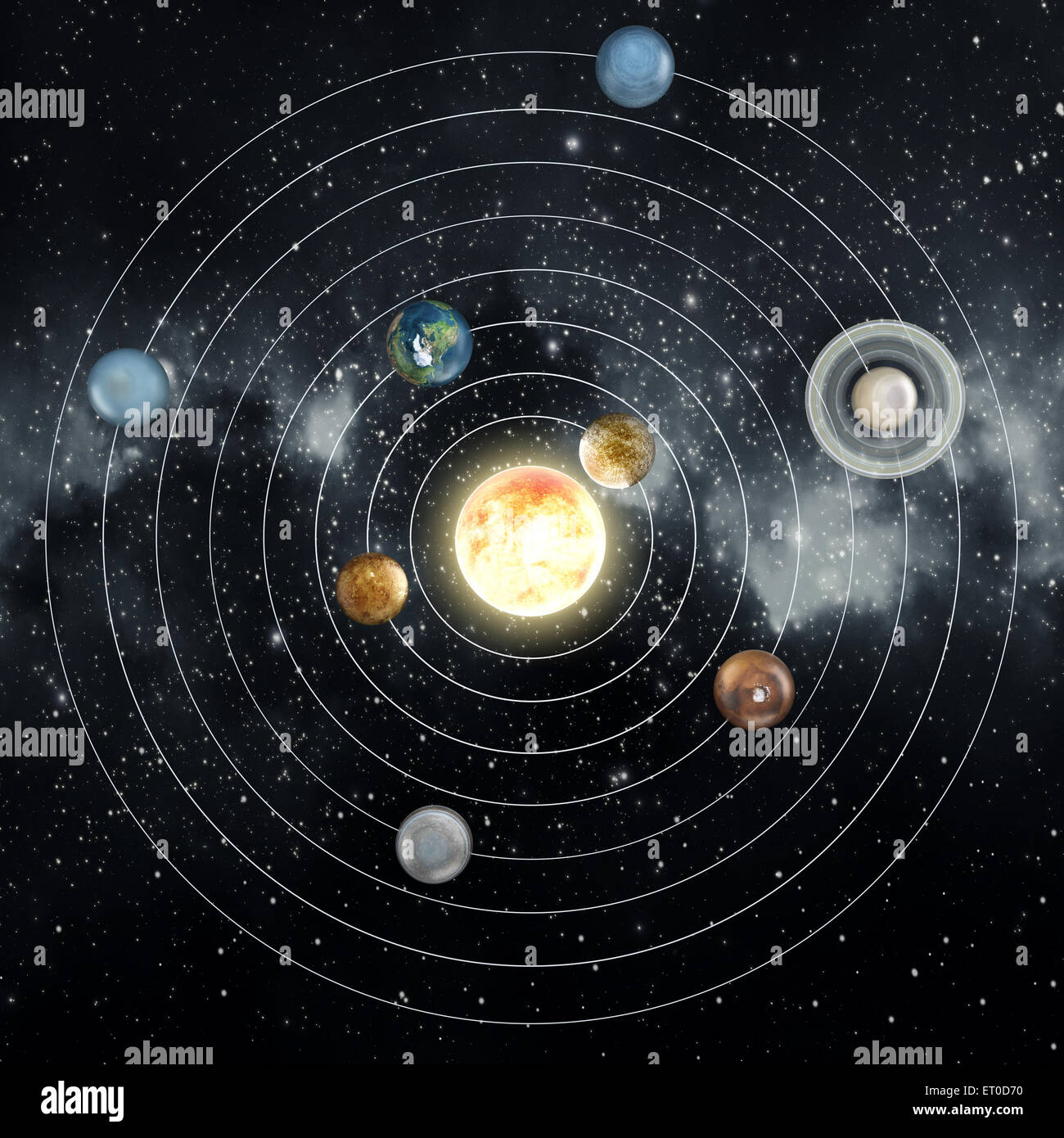
Solar system diagram in the space Stock Photo Alamy
Our solar system formed about 4.5 billion years ago from a dense cloud of interstellar gas and dust. The cloud collapsed, possibly due to the shockwave of a nearby exploding star, called a supernova. When this dust cloud collapsed, it formed a solar nebula - a spinning, swirling disk of material. At the center, gravity pulled more and more.

Diagram Of Our Solar System
Solar System Diagram. Click on the Solar System Diagram below to open the larger version in your browser. Then right-click and press "Save image as…" to save it to your computer. The Planets in Our Solar System. About the Planets. Mercury is the smallest planet, named after Roman messenger god. During the day, the temperature on Mercury.

kids solar system diagram gif Google Search Solar system poster
10 Things Our solar system is made up of a star, eight planets, and countless smaller bodies such as dwarf planets, asteroids, and comets. Our solar system orbits the center of the Milky Way galaxy at about 515,000 mph (828,000 kph). We're in one of the galaxy's four spiral arms.
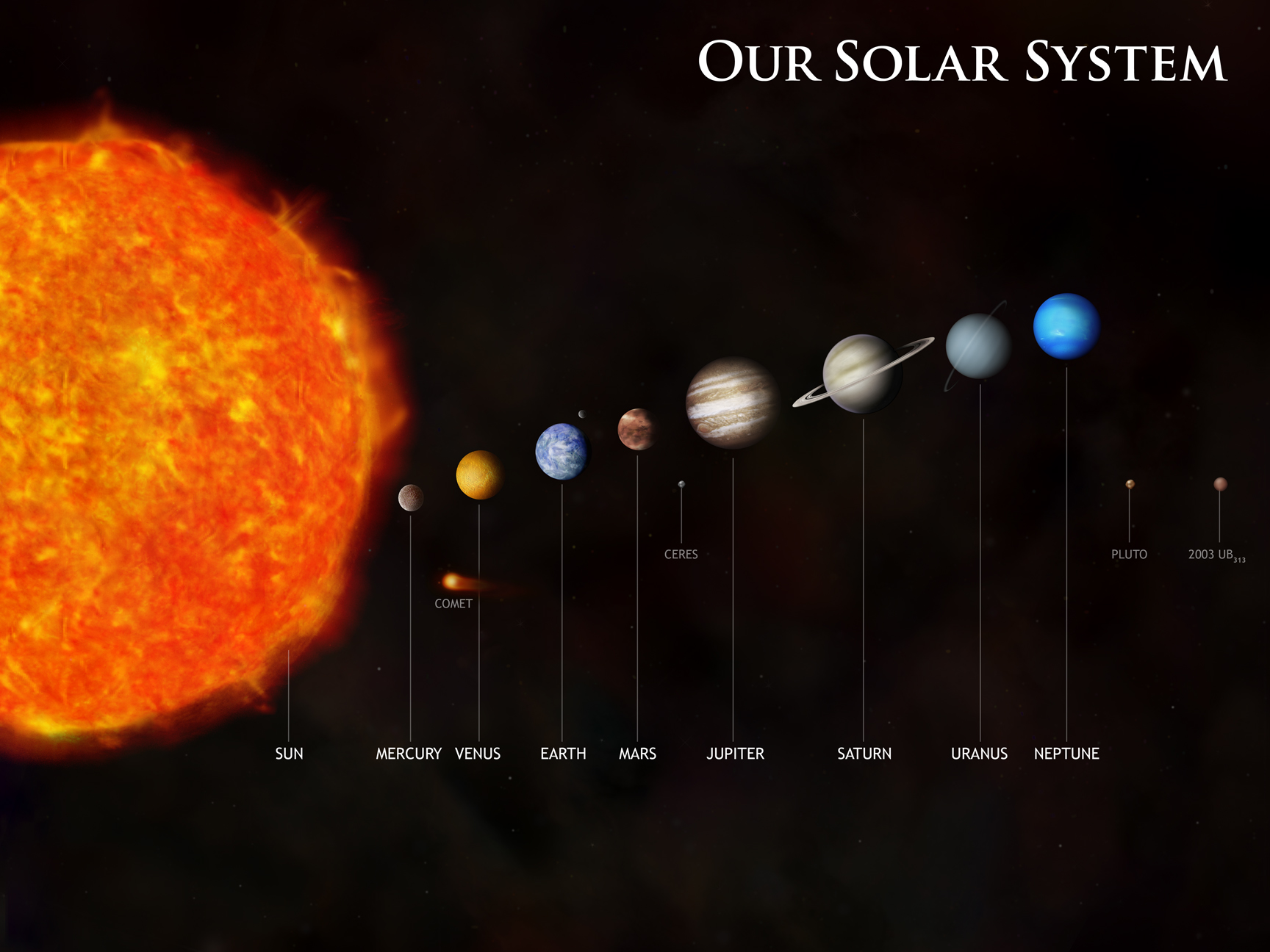
Chandra Resources Solar System (Illustrations)
The Kuiper belt is a region of the outer solar system, extending from the orbit of Neptune (at 30 AU4) to approximately 50 AU from the Sun. It is similar to the asteroid belt, though far larger — 20 times as wide. Like the asteroid belt, it consists mainly of small bodies, remnants from the solar system's formation.

Solar System Diagram Learn the in Our Solar System
As you zoom out, the solar system's outer planets - Jupiter, Saturn, Uranus and Neptune - come into view. The date slider allows you to move forwards or backwards by a few months to see the motion of the planets along their orbits. The top panel shows where the planets appear in the night sky from the Earth.

Diagrams of the Solar System 101 Diagrams
The Nine Planets is an encyclopedic overview with facts and information about mythology and current scientific knowledge of the planets, moons, and other objects in our solar system and beyond.

Solar System in Geography
Our solar system has eight planets, and five dwarf planets - all located in an outer spiral arm of the Milky Way galaxy called the Orion Arm, or Orion Spur. It can be divided into three regions: the inner solar system, the outer solar system, the Kuiper Belt, and the Oort Cloud. The inner, rocky planets are Mercury , Venus , Earth, and Mars.

The 9 Solar System
Solar System Resources Our Solar System Language english Our solar system is made up of a star—the Sun—eight planets, 146 moons, a bunch of comets, asteroids and space rocks, ice, and several dwarf planets, such as Pluto. The eight planets are Mercury, Venus, Earth, Mars, Jupiter, Saturn, Uranus, and Neptune.
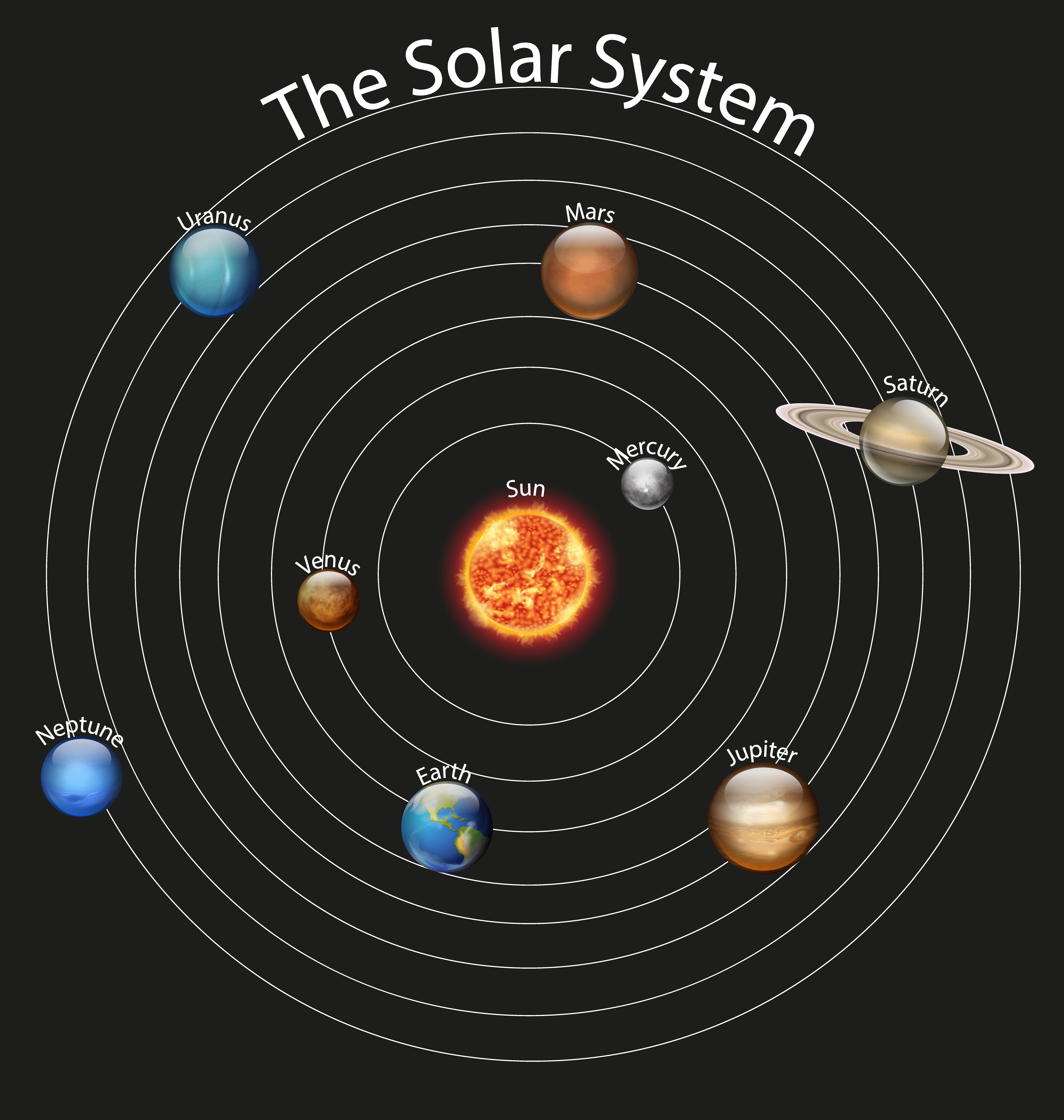
Diagram of in the Solar System 1132887 Vector Art at Vecteezy
Solar System The Solar System [c] is the gravitationally bound system of the Sun and the objects that orbit it. [4] The largest of these objects are the eight planets, which in order from the Sun are four terrestrial planets ( Mercury, Venus, Earth and Mars ); two gas giants ( Jupiter and Saturn ); and two ice giants ( Uranus and Neptune ).

Space Solar System, Solar System Our Solar System, Solar
Our Solar System Dec 6, 2023 jpg (409.28 KB) Our solar system features eight planets, seen in this artist's diagram.
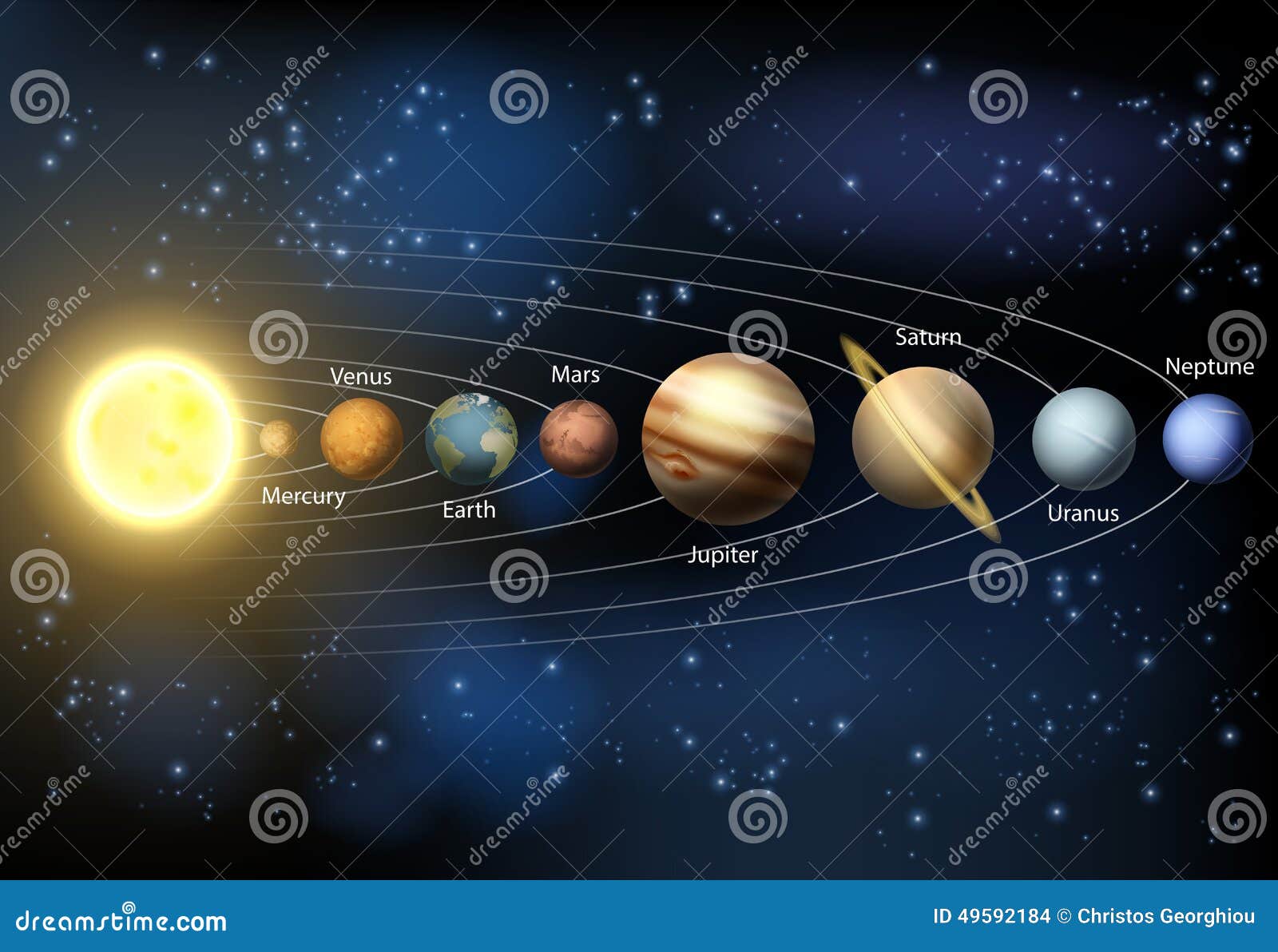
Solar System Diagram Stock Vector Image 49592184
Our solar system formed about 4.6 billion years ago. The four planets closest to the Sun — Mercury, Venus, Earth, and Mars — are called the terrestrial planets because they have solid, rocky surfaces. Two of the outer planets beyond the orbit of Mars — Jupiter and Saturn — are known as gas giants; the more distant Uranus and Neptune are.

Printable solar system diagram for the day 1 craft VBS 2014
By clicking on the spinners the selected time will be changed and the positions updated accordingly. It's possible to select dates from Jan 1st 1900, up to Dec 31st 2100. Take screenshot. Click on orbit to center object. Visualize orbits, relative positions and movements of the Solar System objects in an interactive 3D Solar System viewer and.
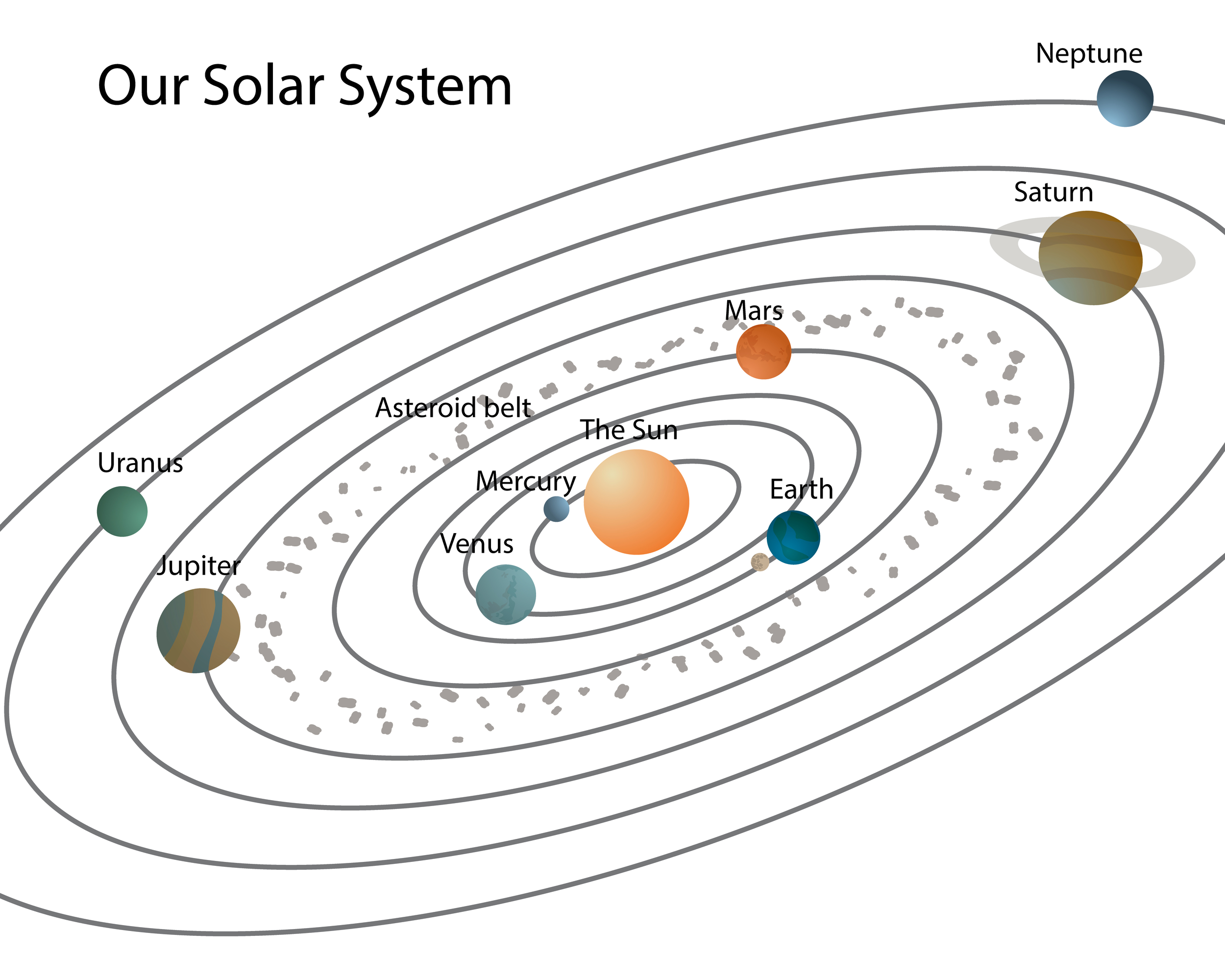
The Solar System
solar system, assemblage consisting of the Sun —an average star in the Milky Way Galaxy —and those bodies orbiting around it: 8 (formerly 9) planets with more than 210 known planetary satellites (moons); many asteroids, some with their own satellites; comets and other icy bodies; and vast reaches of highly tenuous gas and dust known as the inter.
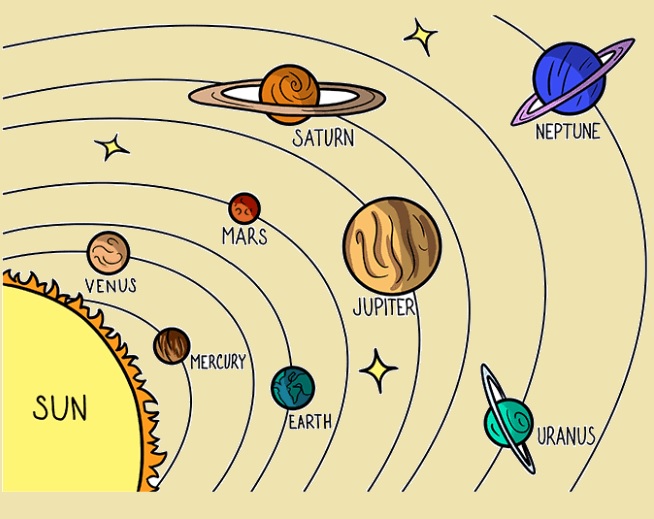
Diagram Of In Our Solar System
The sun heats the solar system and is at the center of our solar system. It's so massive that it holds 99.9% of the total mass of the solar system. The sun is mostly hydrogen and helium. By fusing hydrogen with helium, the sun releases vast amounts of energy toward Earth. It takes sunlight 8 minutes and 20 seconds to reach us.

Solar System Pictures
Diagram of the Solar System [/caption] This image contains all of the largest objects in the Solar System. You can print this diagram of the Solar System, as well as this handy list of all.